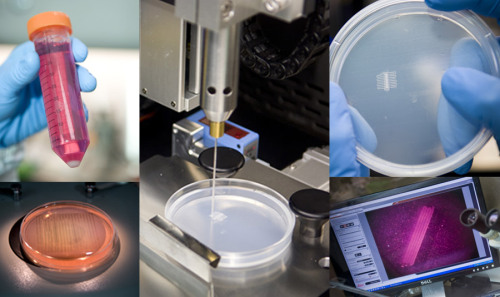
Vaccine Infographic by Leon Farrant
Source: Forbes
Still questioning? This infographic breaks down the indisputable efficiency of vaccines, which Bill Gates has so eloquently affirmed.

New evidence from Ohio State University found that a dim light at night — whether it comes from a night-light, or staying up late in front of a computer or TV — may be making you depressed.Source: The Week
Artificial light disrupts our natural circadian rhythms, which may in turn alter the body’s hormone levels. “When people spend too little time in darkness, it seems that the body suppresses release of the hormone melatonin,” says Laura Blue at TIME, which is thought to fight a myriad of conditions, including tumor growth and cancers. According to the American Medical Association, interrupting the body’s circadian rhythm could also lead to obesity, diabetes, and reproductive problems.
The team speculates that artificial light may be part of the reason depression rates have soared in recent decades. There is good news, however: When the afflicted hamsters were again allowed to sleep a full eight hours per night in the dark, their depressive symptoms disappeared completely. This offers gloomy night owls some hope, says Bedrosian. “People who stay up late in front of the television and computer may be able to undo some of the harmful effects just by going back to a regular light-dark cycle and minimizing their exposure to artificial light.”
The algorithm Google uses to rank which results pop up first in search queries, PageRank, orders results based on how other web pages are connected to them via hyperlinks. Researchers modified PageRank to develop NetRank, which scans how genes and proteins in a cell are similarly connected through a network of interactions with their neighbors — “‘friends’ in the social network analogy,” said researcher Christof Winter, a medical doctor and computational biologist at Lund University in Sweden.
The investigators focused on pancreatic cancer, the most common form of which, pancreatic ductal adenocarcinoma, accounts for approximately 130,000 deaths each year in Europe and the United States. Very few tests exist to find out a prognosis for the disease — how it might progress, whether a patient might live or die.
The researchers used NetRank on about 20,000 proteins to see which ones were the best indicators for survival. They identified seven proteins that could help assess how aggressive a patient’s tumor is and guide clinicians to decide if the prognosis was worth trying chemotherapy or not.
As to how accurate prognoses based on these seven markers were, roughly speaking, “our markers are right in two-thirds of cases, and wrong in one-third,” Winter said. These markers were 6 to 9 percent more accurate at prognoses compared with those relying on conventional clinical parameters. In addition to improving prognoses of cancer, this research could also help identify new targets to help destroy tumors.
With over 285 million visually impaired people in the world, research into restoring vision for the blind is well past its critical stage. But with innovations in technology, and by turning to a focus to even just restoring rudimentary vision, research suggests that a more expansive solution is on the near horizon. Better yet, it’s a solution that may serve as the foundation for something much more instrumental, for many more people.
A team of electrical engineers at the Monash Vision Group (MVG) of Monash University in Australia has had early success in doing just that. The group has been laboratory testing a new microchip that will be used to power a bionic eye. With pre-clinical assessments due to begin shortly, the team’s encouraging results suggest that the project is on track to deliver a direct-to-brain bionic eye implant ready for patient testing by the year 2014.

Unlike other experimental approaches that utilize ink-jet printers to deposit cells, Organovo’s technology enables cells to interact with each other the way they do in the body. How? They are packed tightly together, sandwiched, if you will, and incubated. This prompts them to cleave to each other and interchange chemical signals. When printed, the cells are grouped together in a paste that helps them grow, migrate, and align themselves properly. In the case of muscle cells, the way they orient themselves in the same direction allow for contractions of the tissue.The company hopes to one day build entire organs for transplants. Because tissue is able to be built from a patient’s own cells, the risk of rejection would be very low.
For 50 years, scientists searched for the secret to making tiny implantable devices that could travel through the bloodstream. Engineers at Stanford have demonstrated just such a device. Powered without wires or batteries, it can propel itself though the bloodstream and is small enough to fit through blood vessels. Someday, your doctor may turn to you and say, "Take two surgeons and call me in the morning." If that day arrives, you may have electrical engineer Ada Poon to thank. This week, at the International Solid-State Circuits Conference, before an audience of her peers, Poon demonstrated a tiny, wirelessly powered, self-propelled medical device capable of controlled motion through a fluid – blood, to be exact. The era of swallow-the-surgeon medical care may no longer be the stuff of science fiction.Source: Stanford University